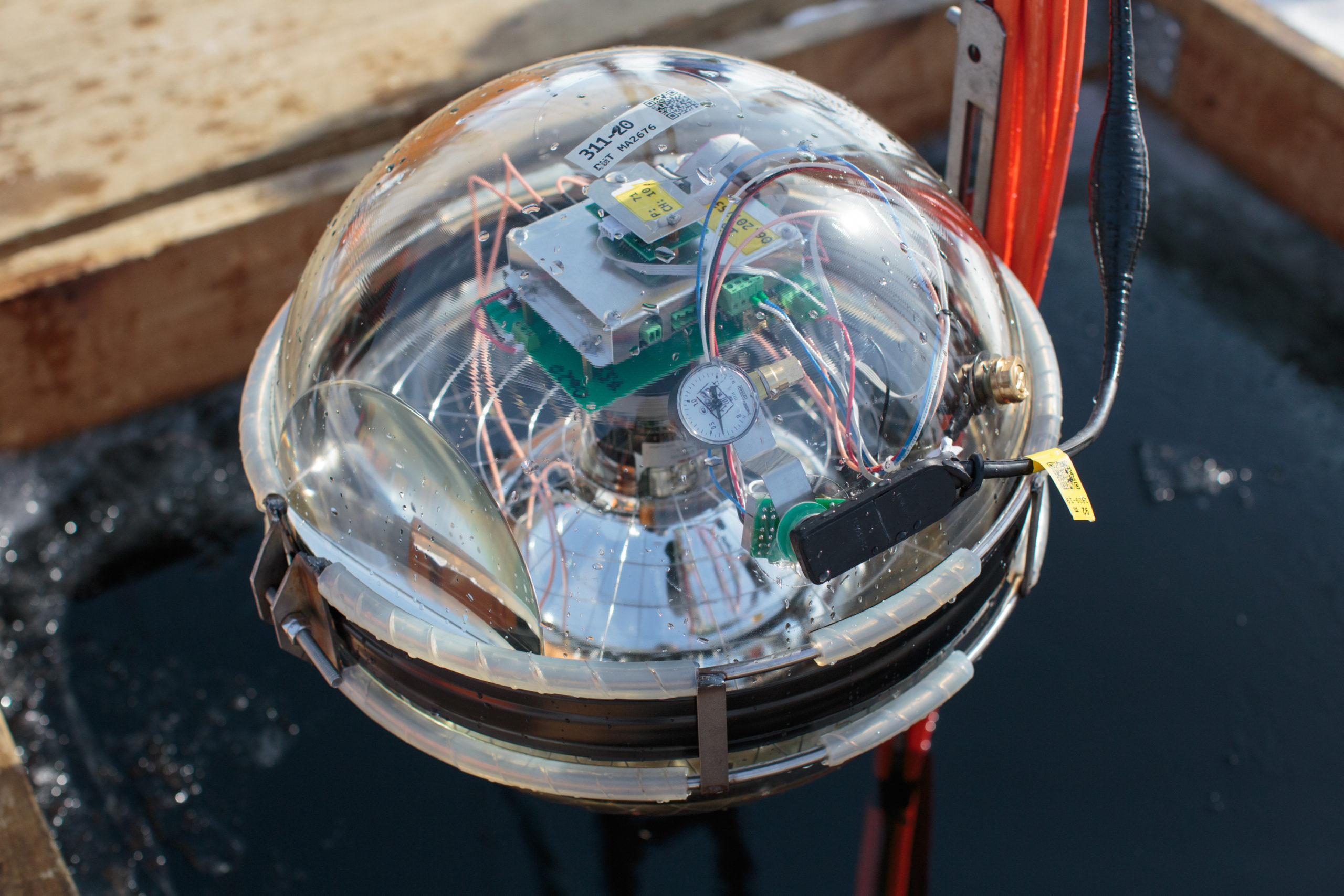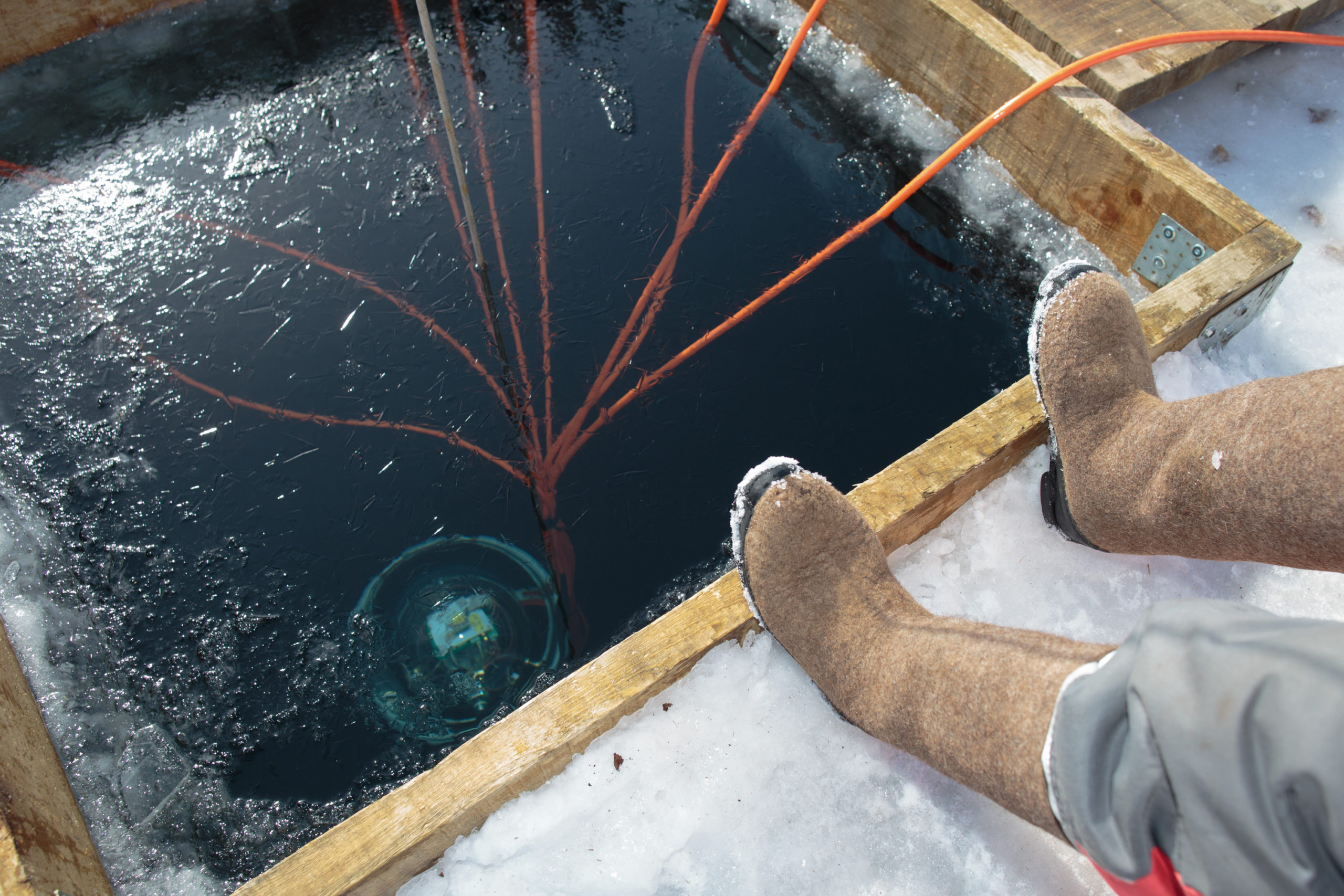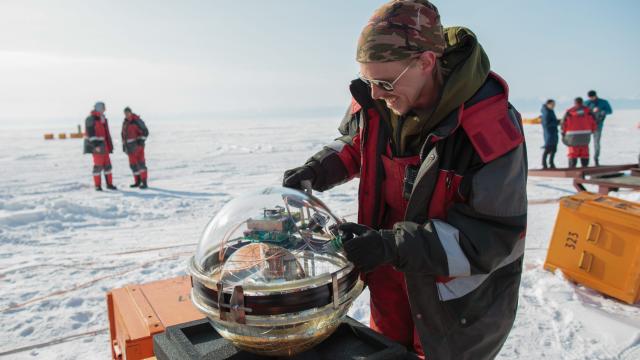On Saturday, a team of Russian researchers dropped a brand-new telescope into frigid Lake Baikal, the deepest lake on Earth. It wasn’t an accident; the instrument took the plunge to give the scientists a better shot at detecting neutrinos, elusive subatomic particles that are extremely difficult to spot, since they usually pass right through matter without leaving a trace.
It may seem counterintuitive to try to get a better view of space from nearly a mile underwater. But if you’re looking for neutrinos arriving from space instead of light, this location makes a lot more sense. Neutrinos slice through most ordinary matter like butter: By the time you reach the end of this sentence, hundreds of trillions of neutrinos will have shot through your body. When transiting through some media, like water, however, the particles can sometimes leave evidence of their existence.

Lake Baikal contains more water than all the Great Lakes put together, making it a prime spot to observe those pesky little particles. So the Russians — in a collaboration with Czech, German, Polish, and Slovakian researchers — splashed the neutrino sensor into the lake, about 3 km off shore. (In Irkutsk, the lake is frozen over and is a destination for all types, from particle physicists to Instagram influencers).
The Russian telescope is not the first to seek out neutrinos in alien terrain; the United States has a detector nicknamed IceCube that is constituted by a cubic kilometre of ice at the South Pole. This one also has an arguably less catchy name: the Baikal Gigaton Volume Detector, or Baikal-GVD for short.
Looking like a technological crystal ball, with its circuitry visible through the clear glass sphere, the telescope is set up to detect neutrinos about a third of a mile away in any direction, or about as far as Toronto’s CN Tower is tall. Eventually, Dmitry Naumov of the Joint Institute for Nuclear Research told AFP, that distance would be doubled.

“Of course, Lake Baikal is the only lake where you can deploy a neutrino telescope because of its depth,” Bair Shoibonov of the Joint Institute for Nuclear Research told the AFP. “Fresh water is also important, water clarity too. And the fact that there is ice cover for two, two and a half months is also very important.”
Scientists want to detect neutrinos for many reasons. For one, learning more about neutrino behaviour could help us understand why there’s more matter than antimatter in the universe.
